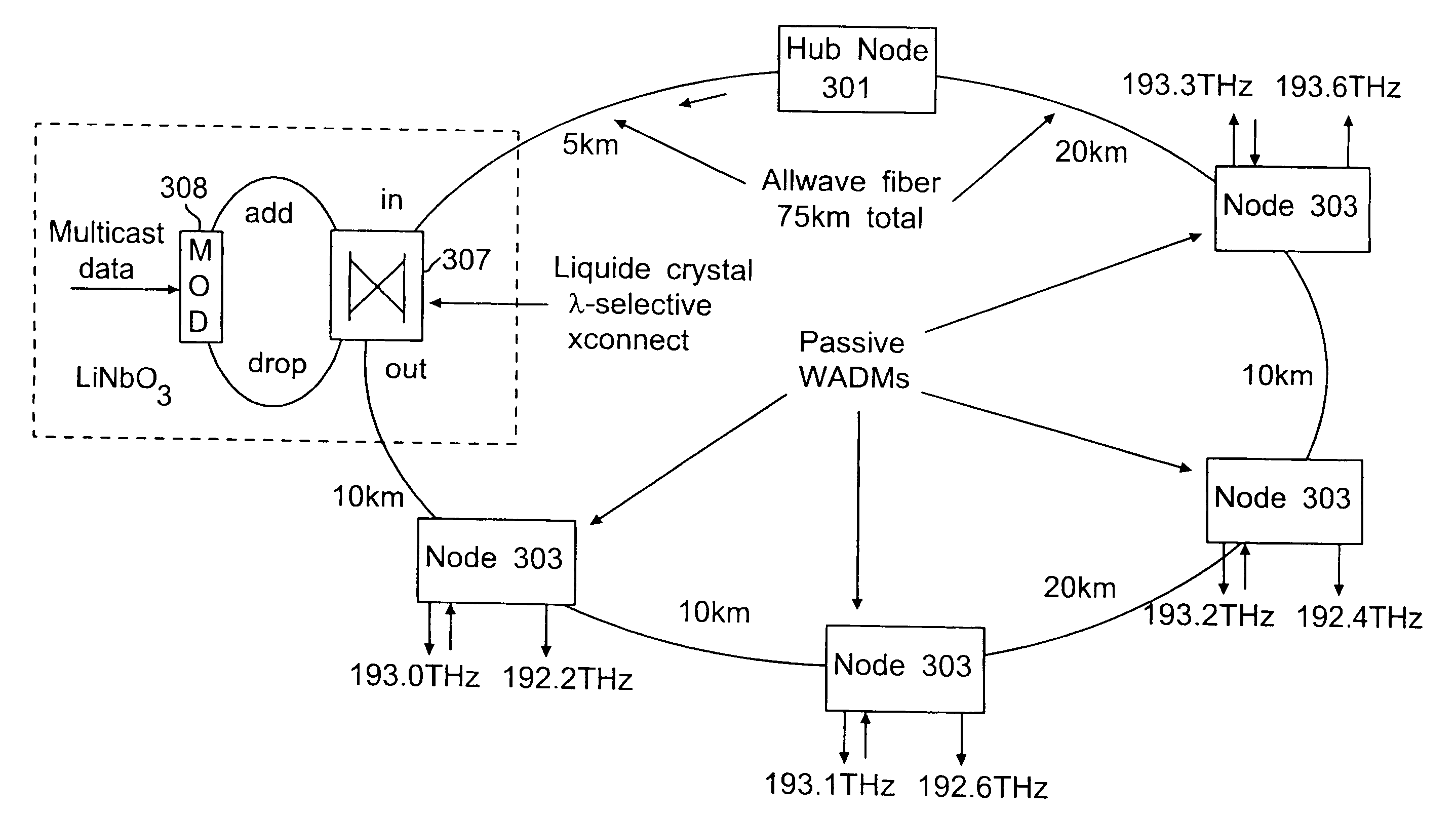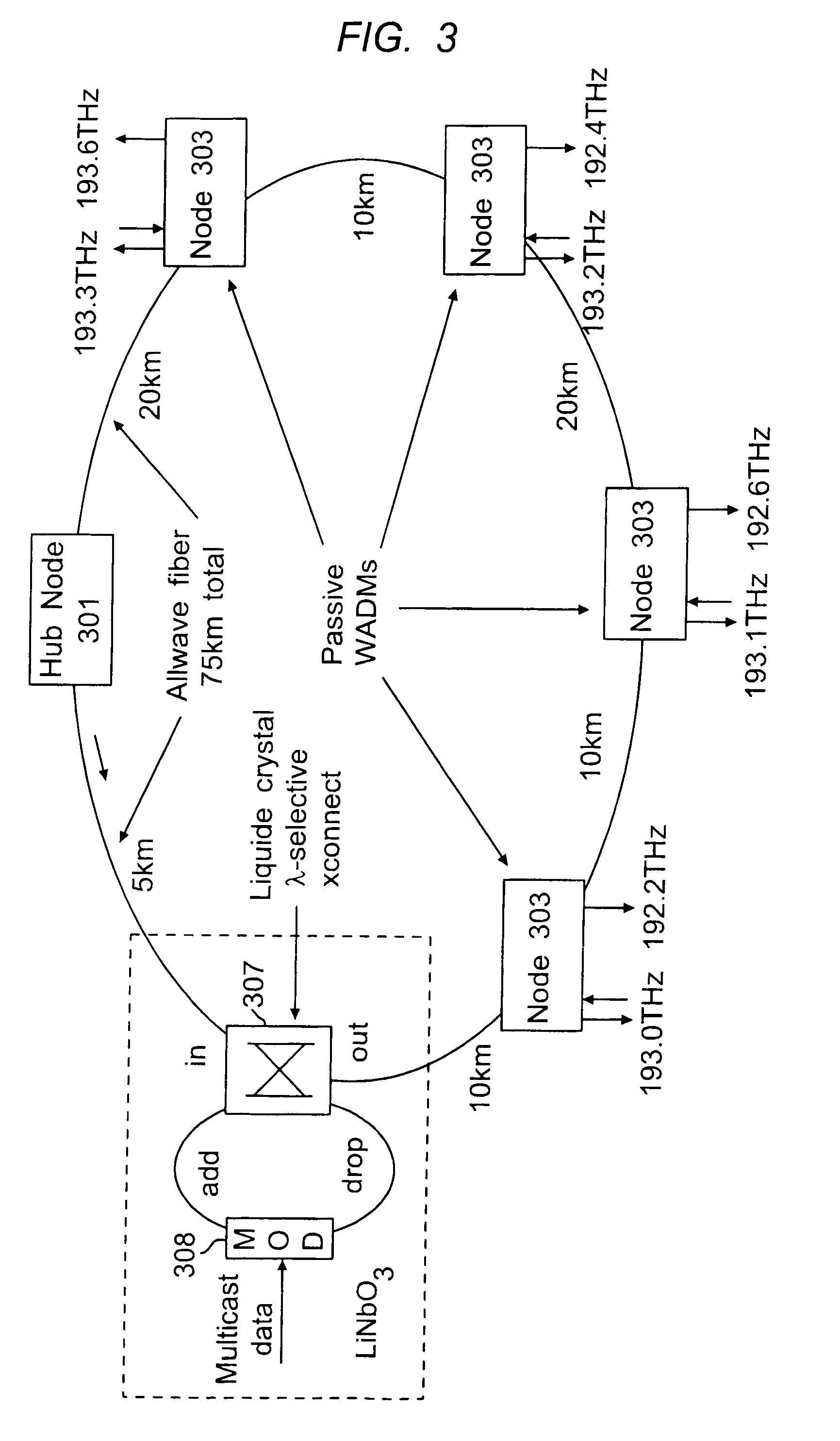Delivering multicast services on a wavelength division multiplexed network using a configurable four-port wavelength selective crossbar switch
a multicast service and crossbar switch technology, applied in multiplex communication, instruments, optical elements, etc., can solve problems such as signaling difficulties, quality of service issues, and bottlenecks at multicast servers
- Summary
- Abstract
- Description
- Claims
- Application Information
AI Technical Summary
Benefits of technology
Problems solved by technology
Method used
Image
Examples
first embodiment
[0020]To enable multiple service providers to share the infrastructure cost of a metropolitan area network (MAN), a number of wavelengths can be reserved for multicast services. FIG. 1 is a functional block diagram of a unidirectional MAN 100 providing multicasting of data services on different wavelengths using a configurable four-port wavelength crossbar switch (4WCS) according to the present invention. MAN 100 includes a hub node 101, a modulator loop 102, and a plurality of user nodes N1-N4. Hub node 101 sends out signals having standard wavelengths. Modulator loop 102 is connected to MAN 100 by a four-port wavelength selective crossbar switch (4WCS) 103. Four-port crossbar switch 103 can operate based on, for example, diffraction gratings combined with spatial light modulator arrays, tunable fiber gratings with circulators and wavelength slicers, or arrayed waveguide gratings (AWG) combined with optical switches.
[0021]Optical sources (not shown) are preferably located at hub no...
second embodiment
[0025]In the situation that modulator loop 102 is not on the upstream of all the user nodes (N1 to N4 in FIG. 1), a bi-directional ring is required to support users on either side of modulator loop 102. FIG. 2 is a functional block diagram of a bi-directional metropolitan area network (MAN) 200 providing multicasting of data services on different wavelengths using a configurable four-port wavelength selective crossbar switch (4WCS) according to the present invention. In this embodiment, the 4WCS must operate bidirectionally. In FIG. 2, a modulator loop 202 that includes a modulator 204 is provided in the “middle” of the MAN 200, that is, modulator loop 202 is physically located in MAN 200 so that at least one subscriber node N is located in either direction around MAN 200. Modulator loop 202 is connected to MAN 200 by a four-port wavelength crossbar switch (4WCS) 203. Accordingly, the clockwise wavelengths that are generated by hub node 201 are modulated by modulator loop 202 and th...
PUM
 Login to View More
Login to View More Abstract
Description
Claims
Application Information
 Login to View More
Login to View More - R&D
- Intellectual Property
- Life Sciences
- Materials
- Tech Scout
- Unparalleled Data Quality
- Higher Quality Content
- 60% Fewer Hallucinations
Browse by: Latest US Patents, China's latest patents, Technical Efficacy Thesaurus, Application Domain, Technology Topic, Popular Technical Reports.
© 2025 PatSnap. All rights reserved.Legal|Privacy policy|Modern Slavery Act Transparency Statement|Sitemap|About US| Contact US: help@patsnap.com



